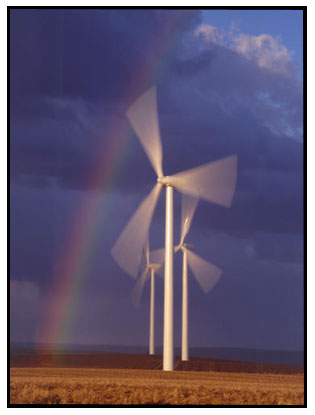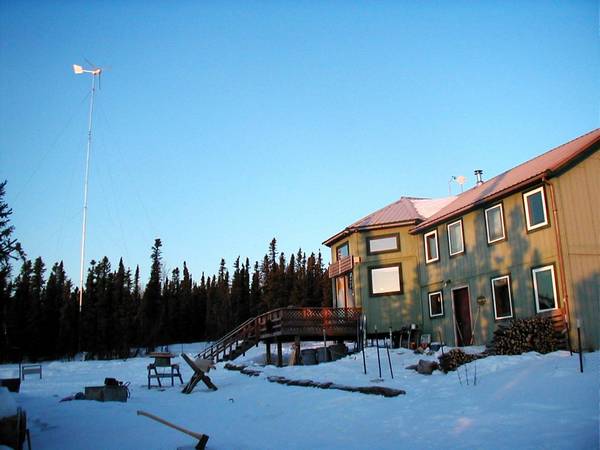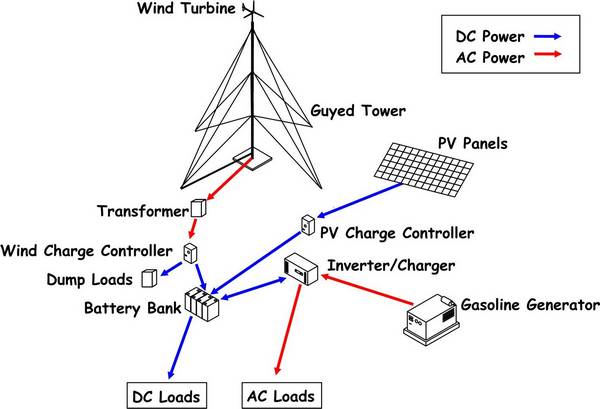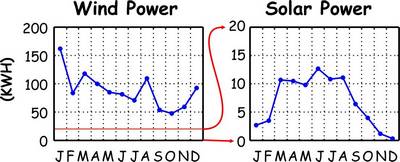|
|
Wind Power |
||||||||||||||||||||
|
Danielson House. Picture courtesy of Seth Danielson. You can clearly see the wind turbine on the left and the photovoltaic cells over the front porch. Seth Danielson, a research project manager in physical oceanography for University of Alaska Fairbanks' School of Fisheries and Ocean Sciences, has made the conversion to renewable forms of energy. Along with his wife and two daughters, he lives "off the grid" atop Murphy Dome. Seth received a B. S. in Electrical Engineering from Lehigh University in 1990 and a M. S. in Oceanography from University of Alaska Fairbanks in 1996. Seth has engineered his house to be energy efficient to conserve the electricity that he generates from two 75W BP Photovoltaic Panels and a 11.8’ diameter AWP 3.6 Wind Turbine generating 3 phase 110V at 1 kW of power. A small schematic of his system:
Picture courtesy of Seth Danielson
Seth's estimated power generation from 2004:
Chart courtesy of Seth Danielson
As you can see from the chart, the Danielson family relies heavily on the wind power with solar power being a supplementary source of energy. Seth admits that his family is always looking for ways to cut corners on energy consumption. Some of the things he recommends are:
Seth has been so successful that he was interviewed by KTUU News Channel 2 from Anchorage, Alaska. The link to the article is posted below. Unfortunately, the link to the video of this news story is no longer active. In the article, they give Seth recognition on his hard work by saying, "The Danielson family's houses is one of the more energy efficient homes in Alaska." That is a quote to be proud of. http://www.ktuu.com/Global/story.asp?S=5758910
|
Kevin Taylor - Spring 2007
Contact: fskdt3@uaf.edu
Physics 212 Web Project
Dr. D. Newman
University of Alaska Faribanks



